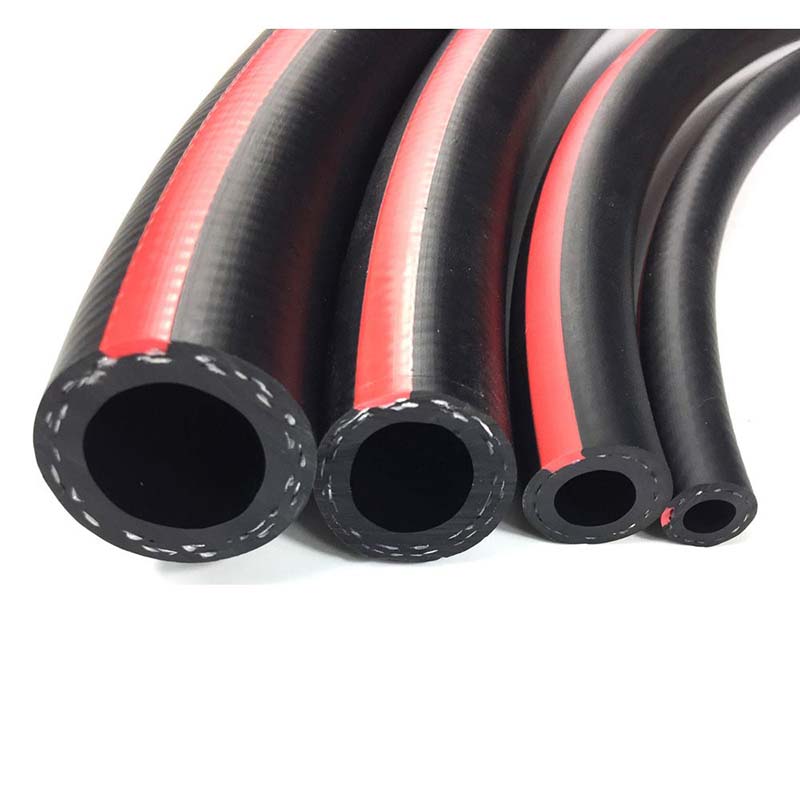polyurethane pneumatic tubing
The Versatility of Polyurethane Pneumatic Tubing
In the realm of industrial applications, the importance of selecting the right materials for pneumatic systems cannot be overstated. Among the various options available, polyurethane pneumatic tubing has emerged as a favored choice due to its unique properties and versatility. This article explores the characteristics of polyurethane tubing, its advantages over other materials, and its wide range of applications.
What is Polyurethane Pneumatic Tubing?
Polyurethane (PU) pneumatic tubing is a type of flexible pipe used predominantly in pneumatic systems. It is made from a thermoplastic elastomer that combines the essential properties of rubber and plastic. This unique construction endows polyurethane tubing with exceptional durability, flexibility, and resistance to various environmental factors.
Key Properties
1. Flexibility and Bend Radius One of the defining features of polyurethane tubing is its high flexibility. It can withstand tight bending without kinking, making it ideal for dynamic applications where movement and flexing are common. This flexibility allows for easy routing, even in confined spaces.
2. Chemical Resistance PU tubing exhibits excellent resistance to a wide range of chemicals, oils, and solvents. This resistance is crucial in industrial environments where exposure to corrosive substances can degrade traditional tubing materials, resulting in leaks and system failures.
3. Temperature Tolerance Polyurethane pneumatic tubing can operate effectively across a broad temperature range, typically from -40°F to 180°F (-40°C to 80°C). This range allows for its use in diverse environments, from cold storage facilities to high-temperature industrial settings.
4. Abrasion and Tear Resistance The robust construction of PU tubing provides substantial resistance to abrasion and tearing, which can extend the lifespan of pneumatic systems, especially in rugged applications where wear and tear are inevitable.
5. Lightweight Design Compared to metal or heavier polymer options, polyurethane tubing is lightweight, which can contribute to reduced overall system weight. This is particularly advantageous in applications where minimizing weight is crucial, such as in the aerospace or automotive industries.
Advantages Over Other Materials
polyurethane pneumatic tubing

Polyurethane tubing stands out when compared to traditional materials like PVC or rubber. While PVC offers good chemical resistance and is cost-effective, its rigidity limits application flexibility. Rubber, while flexible, can be susceptible to swelling in the presence of certain substances, leading to compromised integrity.
In contrast, the combination of flexibility, chemical resistance, and durability in polyurethane tubing makes it a more reliable option for many pneumatic applications
. The ability to adapt to various conditions without compromising performance allows engineers and designers to innovate without limitations.Applications of Polyurethane Pneumatic Tubing
The applications of polyurethane pneumatic tubing are vast and diverse. Industries including automotive, food processing, pharmaceuticals, and manufacturing frequently use PU tubing for various purposes
- Automotive Systems In automotive manufacturing, PU tubing is employed in air brake systems, fuel lines, and pneumatic applications, where its lightweight and flexible nature facilitates complex routing.
- Robotics and Automation In robotics, polyurethane tubing is used in actuators and pneumatic manipulations, where responsiveness and flexibility are critical for performance.
- Food and Beverage The food processing industry benefits from polyurethane tubing's resistance to moisture and chemicals, making it suitable for conveying products under stringent hygiene standards.
- Medical Applications In the medical field, PU tubing is utilized in devices and systems where sterilization and contamination control are essential.
Conclusion
Polyurethane pneumatic tubing represents an innovation in material science that significantly enhances the efficiency and reliability of pneumatic systems across various industries. Its unique attributes, from flexibility to chemical resistance, solidify its position as a go-to solution for engineers and industry professionals. As technology continues to evolve, the role of polyurethane tubing is set to expand, contributing to more efficient, lightweight, and robust pneumatic systems in the future. Whether it’s supporting the automation of factories or enhancing the functionality of medical devices, PU tubing exemplifies the synergy of performance and innovation.
-
Top Quality Oxy Acetylene Hoses for Sale Fit for Welding DemandsNewsJul.28,2025
-
The Future of Pneumatic Air Tubes in IndustryNewsJul.28,2025
-
Superior and Reliable LPG Hose Pipe Solutions for Every NeedNewsJul.28,2025
-
Exceptionally Durable and Versatile Premium Braided PVC TubingNewsJul.28,2025
-
Best Adapters for Connecting Garden Hose to PVC Pipe ConnectionsNewsJul.28,2025
-
The Essential Role of LPG Hoses in Safe and Efficient Gas DistributionNewsJul.16,2025














